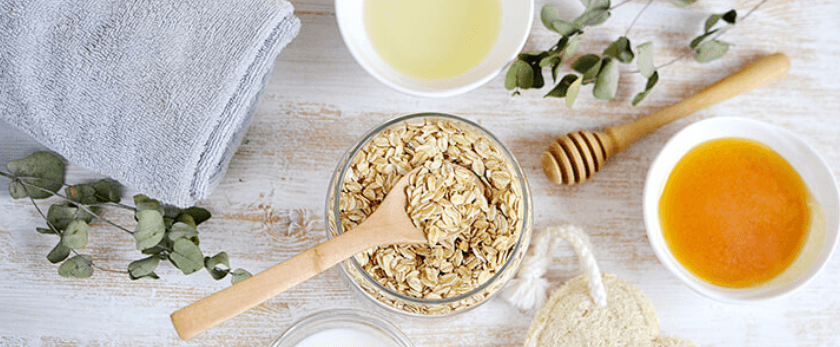In today's world, where environmental concerns are at an all-time high, it's important to consider the impact of our daily choices on the planet. From plastic pollution to carbon emissions, every decision we make has an effect on the environment. One area where we can make a positive change is in our beauty and skincare routines. By opting for homemade face masks, we can not only reduce our carbon footprint but also take a step towards a more sustainable future.
The Problem with Store-Bought Face Masks
Store-bought face masks may seem like a convenient option, but they come with a hefty environmental cost. Most face masks are packaged in single-use plastic containers, which contribute to the growing plastic pollution crisis. These containers often end up in landfills or the ocean, where they take hundreds of years to decompose, releasing harmful chemicals into the environment.
Moreover, the production of these face masks also has a significant impact on the environment. The ingredients used in these masks are often sourced from unsustainable practices, such as deforestation and over-harvesting. The manufacturing process also involves the use of energy and resources, contributing to carbon emissions and climate change.

The Benefits of Making Your Own Face Masks
Making your own face masks not only eliminates the negative impact on the environment but also has several other benefits. Here are some reasons why making your own face masks is better for the environment:
-
Reduced plastic waste: By making your own face masks, you can avoid the use of single-use plastic containers, reducing your plastic waste significantly.
-
Sustainable ingredients: You have control over the ingredients used in your homemade face masks, allowing you to choose sustainable and eco-friendly options. You can opt for organic, locally sourced ingredients, reducing the carbon footprint of your face masks.
-
Cost-effective: Making your own face masks can save you money in the long run. You can buy ingredients in bulk and reuse containers, reducing the need for constant repurchasing of store-bought masks.
-
Customizable: Homemade face masks allow you to customize the ingredients according to your skin type and concerns. This means you can avoid harsh chemicals and opt for natural, nourishing ingredients that are better for your skin and the environment.
What You'll Need to Make Homemade Face Masks
Making your own face masks is a simple and fun DIY project that requires minimal ingredients and tools. Here are some essential items you'll need to get started:
-
Base ingredients: These are the main ingredients that will form the base of your face mask. Some common base ingredients include clay, honey, yogurt, and avocado.
-
Liquid ingredients: These ingredients help to bind the base ingredients together and add moisture to the mask. Some examples include water, aloe vera gel, and rose water.
-
Mixing bowl and spoon: You'll need a mixing bowl and spoon to combine the ingredients and create a smooth paste.
-
Optional ingredients: You can add optional ingredients to your face mask to target specific skin concerns. Some examples include essential oils, tea leaves, and fruit extracts.
-
Storage container: You'll need a container to store your face mask. You can reuse old jars or containers to reduce waste.
How to Make Homemade Face Masks
Now that you have all the necessary ingredients and tools, it's time to make your own face masks. Here are some simple steps to follow:
-
Start by choosing your base ingredient and adding it to a mixing bowl. You can use one or a combination of base ingredients, depending on your skin type and concerns.
-
Next, add your liquid ingredient to the bowl and mix it with the base ingredient until you have a smooth paste. You can adjust the amount of liquid depending on the consistency you prefer.
-
If you're adding any optional ingredients, now is the time to do so. Mix them into the paste until they are well incorporated.
-
Your homemade face mask is now ready to use. Apply a thin layer to your face, avoiding the eye area, and leave it on for 10-15 minutes.
-
Rinse off the mask with warm water and pat your face dry. Follow up with your regular skincare routine.
-
Any leftover face mask can be stored in a container and refrigerated for up to a week.
Responsible Disposal of Homemade Face Masks
While homemade face masks are a more sustainable option, it's important to dispose of them responsibly to avoid any negative impact on the environment. Here are some tips for responsible disposal:
-
Compost: If your face mask contains organic ingredients, you can compost it in your backyard. This will not only reduce waste but also provide nutrients for your plants.
-
Reuse containers: Instead of throwing away your face mask container, wash it and reuse it for your next batch of face masks.
-
Recycle: If your face mask container is made of plastic, make sure to recycle it properly. Check with your local recycling center for guidelines on recycling plastic containers.
-
Avoid flushing down the drain: Some ingredients, such as clay, can clog drains and harm aquatic life. Avoid flushing your face mask down the drain and dispose of it in the trash instead.
Conclusion
Making your own face masks is a simple and effective way to reduce your environmental impact and take a step towards a more sustainable future. By using natural, eco-friendly ingredients and responsible disposal methods, we can make a positive change for the planet. So next time you're in need of a face mask, skip the store-bought options and try making your own. Your skin and the environment will thank you.










